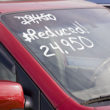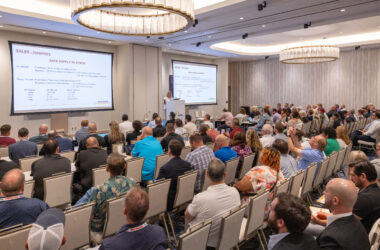At its meeting Wednesday, the Federal Open Market Committee raised federal funds rates by half a point.
The committee set the target rate for federal funds at 4.25 to 4.5 percent. It’s a slight step back after raising rates by three-quarters of a point at the past four meetings.
While issuing a slower increase, the committee remains committed to slowing inflation and hinted at continued increases, topping out at 5 percent. The Fed has moved rates 425 percentage points in 2022, in an effort to slow inflation, with a target goal of 2 percent.
“Clearly the focus is on getting inflation down,” said U.S. Federal Reserve Chair Jerome Powell.
Powell also suggested the committee expects rates to continue to increase in 2023 and will be held longer to meet its goal of bringing down inflation in a sustained way.
“We will have to hold the restrictive level for longer. The 12-month core inflation is at 6 percent, three times the level we want,” Powell explained. “We have a long ways to go for price stability.”
The smaller increase followed positive reports from October and November, showing lower increases in prices.
“It was a welcomed reduction in price increases and the report was in line with what we had hoped for,” Powell said. “It gives us greater confidence in the forecast.”
Powell and the committee noted improved conditions with goods as supply chains have improved in the wake of the pandemic. There is also a slowing in the housing sector with the increased rates. Powell pointed to the key economic sector driving inflation remains the non-housing core services, due to an out-of-balance labor market. Unemployment rates remain near a 50-year low at 3.7 percent.
“We’re more than 4 million people short,” Powell said about the labor market. “We don’t see much change. Even with the high wages, we don’t see participation going up. We’re 3.5 million people short of where we should be.”
Powell indicated accelerated retirement rates, COVID-19 deaths and lower migration rates have played a role in the tight labor market.
The Fed’s increase in rates have dramatically increased finance rates for vehicles.
The Fed’s announcement today of 0.5 percent increase in the cost of federal funds is another stark reminder of the economic uncertainty our consumers and our dealers find themselves. NIADA continues to partner with state, federal and regulatory bodies to focus on meaningful legislation that will both support our industry and aid the economy.
Jeremy Beck, NIADA Vice President
According to Experian’s State of the Automotive Finance Market for the third quarter, the average loan rate was 9.34 percent, up from 8.12 percent in the third quarter of 2021. The average loan term also grew from 66.97 months to 68.08. The average monthly payment topped $525 — an increase of $53 from 2021.
“With the average payment up more than $50, average automotive interest rates up by 1.22 percent, and average terms up more than 1.5 months, there’s no doubt the impact inflation and the economy are having on consumer finances,” said NIADA Vice President Jeremy Beck. “Our independent automotive dealers stand ready to help consumers struggling with their personal budgets. Our BHPH dealers are there to help those severely effected by increasing costs. Our retail dealers continue to be a strong option for consumers looking for quality used vehicles at respectable and affordable prices.
“The Fed’s announcement today of 0.5 percent increase in the cost of federal funds is another stark reminder of the economic uncertainty our consumers and our dealers find themselves. NIADA continues to partner with state, federal and regulatory bodies to focus on meaningful legislation that will both support our industry and aid the economy. We continue robust conversations with our partners to provide support to our independent dealers through meaningful products, services, and offerings.”










